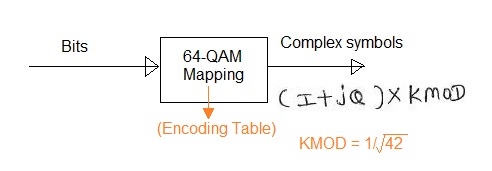Products Category
- FM Transmitter
- 0-50w 50w-1000w 2kw-10kw 10kw+
- TV Transmitter
- 0-50w 50-1kw 2kw-10kw
- FM Antenna
- TV Antenna
- Antenna Accessory
- Cable Connector Power Splitter Dummy Load
- RF Transistor
- Power Supply
- Audio Equipments
- DTV Front End Equipment
- Link System
- STL system Microwave Link system
- FM Radio
- Power Meter
- Other Products
- Special for Coronavirus
Products Tags
Fmuser Sites
- es.fmuser.net
- it.fmuser.net
- fr.fmuser.net
- de.fmuser.net
- af.fmuser.net ->Afrikaans
- sq.fmuser.net ->Albanian
- ar.fmuser.net ->Arabic
- hy.fmuser.net ->Armenian
- az.fmuser.net ->Azerbaijani
- eu.fmuser.net ->Basque
- be.fmuser.net ->Belarusian
- bg.fmuser.net ->Bulgarian
- ca.fmuser.net ->Catalan
- zh-CN.fmuser.net ->Chinese (Simplified)
- zh-TW.fmuser.net ->Chinese (Traditional)
- hr.fmuser.net ->Croatian
- cs.fmuser.net ->Czech
- da.fmuser.net ->Danish
- nl.fmuser.net ->Dutch
- et.fmuser.net ->Estonian
- tl.fmuser.net ->Filipino
- fi.fmuser.net ->Finnish
- fr.fmuser.net ->French
- gl.fmuser.net ->Galician
- ka.fmuser.net ->Georgian
- de.fmuser.net ->German
- el.fmuser.net ->Greek
- ht.fmuser.net ->Haitian Creole
- iw.fmuser.net ->Hebrew
- hi.fmuser.net ->Hindi
- hu.fmuser.net ->Hungarian
- is.fmuser.net ->Icelandic
- id.fmuser.net ->Indonesian
- ga.fmuser.net ->Irish
- it.fmuser.net ->Italian
- ja.fmuser.net ->Japanese
- ko.fmuser.net ->Korean
- lv.fmuser.net ->Latvian
- lt.fmuser.net ->Lithuanian
- mk.fmuser.net ->Macedonian
- ms.fmuser.net ->Malay
- mt.fmuser.net ->Maltese
- no.fmuser.net ->Norwegian
- fa.fmuser.net ->Persian
- pl.fmuser.net ->Polish
- pt.fmuser.net ->Portuguese
- ro.fmuser.net ->Romanian
- ru.fmuser.net ->Russian
- sr.fmuser.net ->Serbian
- sk.fmuser.net ->Slovak
- sl.fmuser.net ->Slovenian
- es.fmuser.net ->Spanish
- sw.fmuser.net ->Swahili
- sv.fmuser.net ->Swedish
- th.fmuser.net ->Thai
- tr.fmuser.net ->Turkish
- uk.fmuser.net ->Ukrainian
- ur.fmuser.net ->Urdu
- vi.fmuser.net ->Vietnamese
- cy.fmuser.net ->Welsh
- yi.fmuser.net ->Yiddish
512 QAM vs 1024 QAM vs 2048 QAM vs 4096 QAM modulation types

"QAM stands for Quadrature Amplitude Modulation. Each symbol in the QAM constellation represent unique amplitude and phase. Hence they can be distinguished from the other points at the receiver. ----- FMUSER"
Let us understand QAM modulation process at transmitter and receiver in the wireless baseband (i.e. Physical layer) chain. We will take example of 64-QAM to illustrate the concept.

● As shown in the figure-1, 64-QAM or any other modulation is applied on the input binary bits.
● The QAM modulation converts input bits into complex symbols which represent bits by variation in amplitude/phase of the time domain waveform. The 64QAM converts 6 bits into one symbol at transmitter.
● The bits to symbols conversion take place at the transmitter while reverse (i.e. symbols to bits) take place at the receiver. At receiver, one symbol gives 6 bits as output of demapper.
● Figure depicts position of QAM mapper and QAM demapper in the baseband transmitter and receiver respectively. The demapping is done after front end synchronization i.e. after channel and other impairments are corrected from the received impaired baseband symbols.
● Data Mapping or modulation process is done before the RF upconversion (U/C) in the transmitter and PA. Due to this, higher order modulation necessitates use of highly linear PA (Power Amplifier) at the transmit end.
See Also: >>Comparison Of 8-QAM, 16-QAM, 32-QAM, 64-QAM 128-QAM, 256-QAM
 |
| Fig:2, 64-QAM Mapping Process |
In 64-QAM, the number 64 refers to 2^6. Here 6 represents number of bits/symbol which is 6 in 64-QAM.
Following table mentions 64-QAM encoding rule. Check the encoding rule in the respective wireless standard. KMOD value for 64-QAM is 1/SQRT(42).
|
Input bits (b5, b4, b3) |
I-Out |
Input bits (b2, b1, b0) |
Q-Out |
|
011 |
7 |
011 | 7 |
|
010 |
5 |
010 | 5 |
|
000 |
3 |
000 | 3 |
|
001 |
1 |
001 | 1 |
|
101 |
-1 |
101 | -1 |
|
100 |
-3 |
100 | -3 |
|
110 |
-5 |
110 | -5 |
|
111 |
-7 |
111 | -7 |
● QAM mapper Input parameters : Binary Bits
● QAM mapper Output parameters : complex data
See Also: >>QAM Theory and Formulas
● Example: Binary Input: (b5,b4,b3,b2,b1,b0) = (011011)
● Complex Output: (1/SQRT(42))* (7+j*7)
See Also: >>Six QAM Formats Index You Should know

The figure-3 depicts 512-QAM constellation diagram.
About 16 points do not exist in each of the four quadrants to make total 512 points with 128 points in each quadrant in this modulation type. It is possible to have 9 bits per symbol in 512-QAM also. 512QAM increases capacity by 50% compare to 64-QAM modulation type.

#1024-QAM modulation
The figure depicts 1024-QAM constellation diagram.● Number of bits per symbol: 10
● Symbol rate: 1/10 of bit rate
● Increase in capacity compare to 64-QAM: About 66.66%
#2048-QAM modulation
Following are the characteristics of 2048-QAM modulation.● Number of bits per symbol: 11
● Symbol rate: 1/11 of bit rate
● Increase in capacity compare to 64-QAM: About 83.33%
● Total constellation points in one quadrant: 512
See Also: >>QAM Modulator & Demodulator
Following are the characteristics of 4096-QAM modulation.
● Number of bits per symbol: 12
● Symbol rate: 1/12 of bit rate
● Increase in capacity compare to 64-QAM: About 100%
● Total constellation points in one quadrant: 1024
|
Specifications |
512 QAM |
1024 QAM |
2048 QAM |
4096 QAM |
|
Number of bits per symbol |
9 |
10 |
11 |
12 |
|
Symbol rate |
1/9 th of bit rate |
1/10 th of bit rate |
1/11 th of bit rate |
1/12 th of bit rate |
|
Total points in constellation diagram |
512 |
1024 |
2048 |
4096 |
|
Increase in capacity compare to 64-QAM |
50 % |
66.66 % |
83.33 % |
100 % |
#Advantages of QAM over other modulation types
Following are the advantages of QAM modulation:
● Helps achieve high data rate as more number of bits are carried by one carrier. Due to this it has become popular in modern wireless communication system such as WiMAX, LTE, LTE-Advanced etc. It is also used in latest WLAN technologies such as 802.11n 802.11 ac, 802.11 ad etc.
Disadvantages of QAM over other modulation types
Following are the disadvantages of QAM modulation:
● Though data rate has been increased by mapping more than 1 bits on single carrier, it requires high SNR in order to decode the bits at the receiver.
● Need higly linear PA (Power Amplifier) at the Transmitter.
● In addition to high SNR, higher modulation techniques need very robust front end algorithms (time, frequency and channel) to decode the symbols without any error.
You may also like: >>What is the Difference between AM and FM?
>>What's the difference between "dB", "dBm", and "dBi"?
>>How To Load/Add M3U/M3U8 IPTV Playlists Manually On Supported Devices
>>What is VSWR: Voltage Standing Wave Ratio

